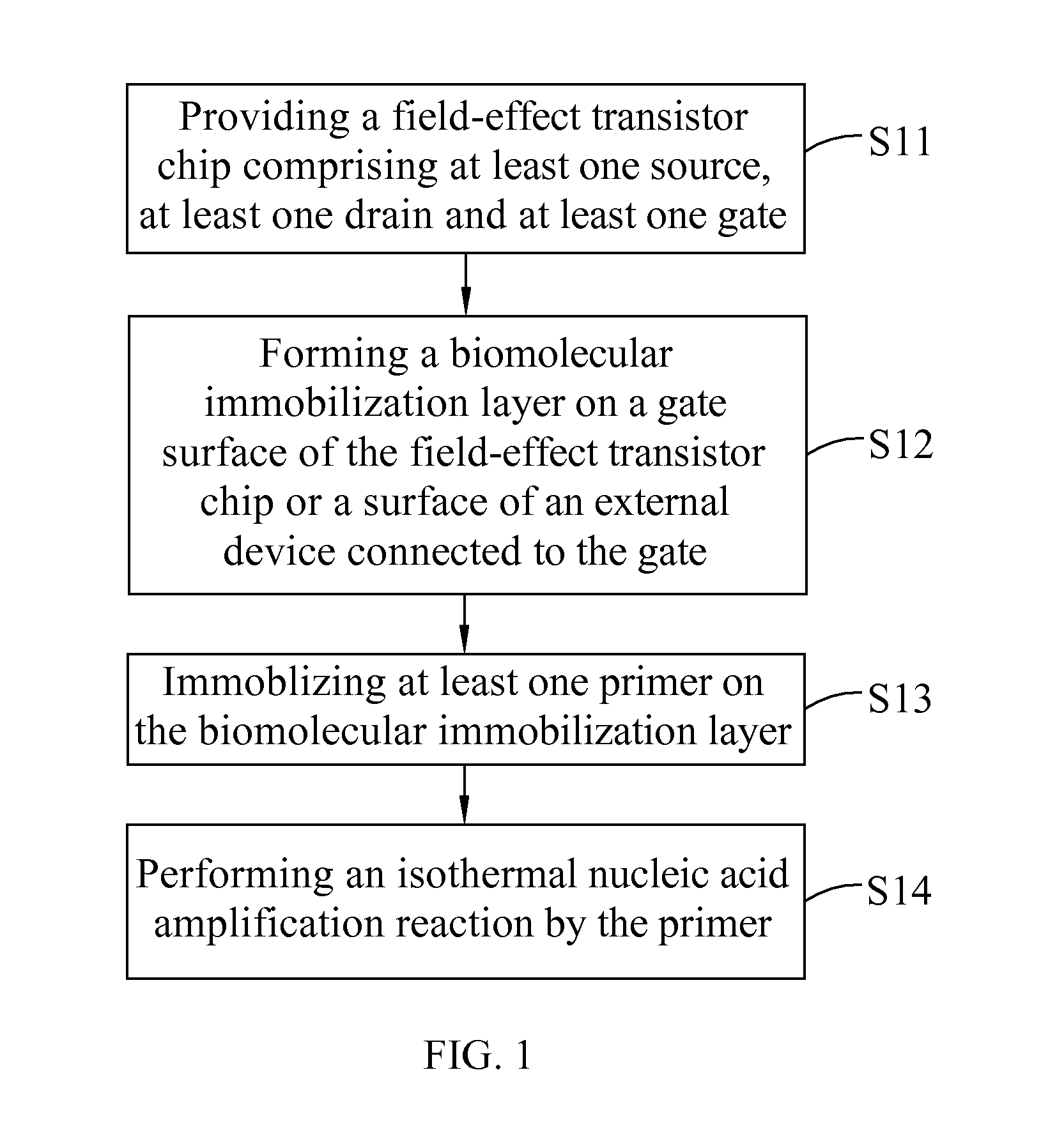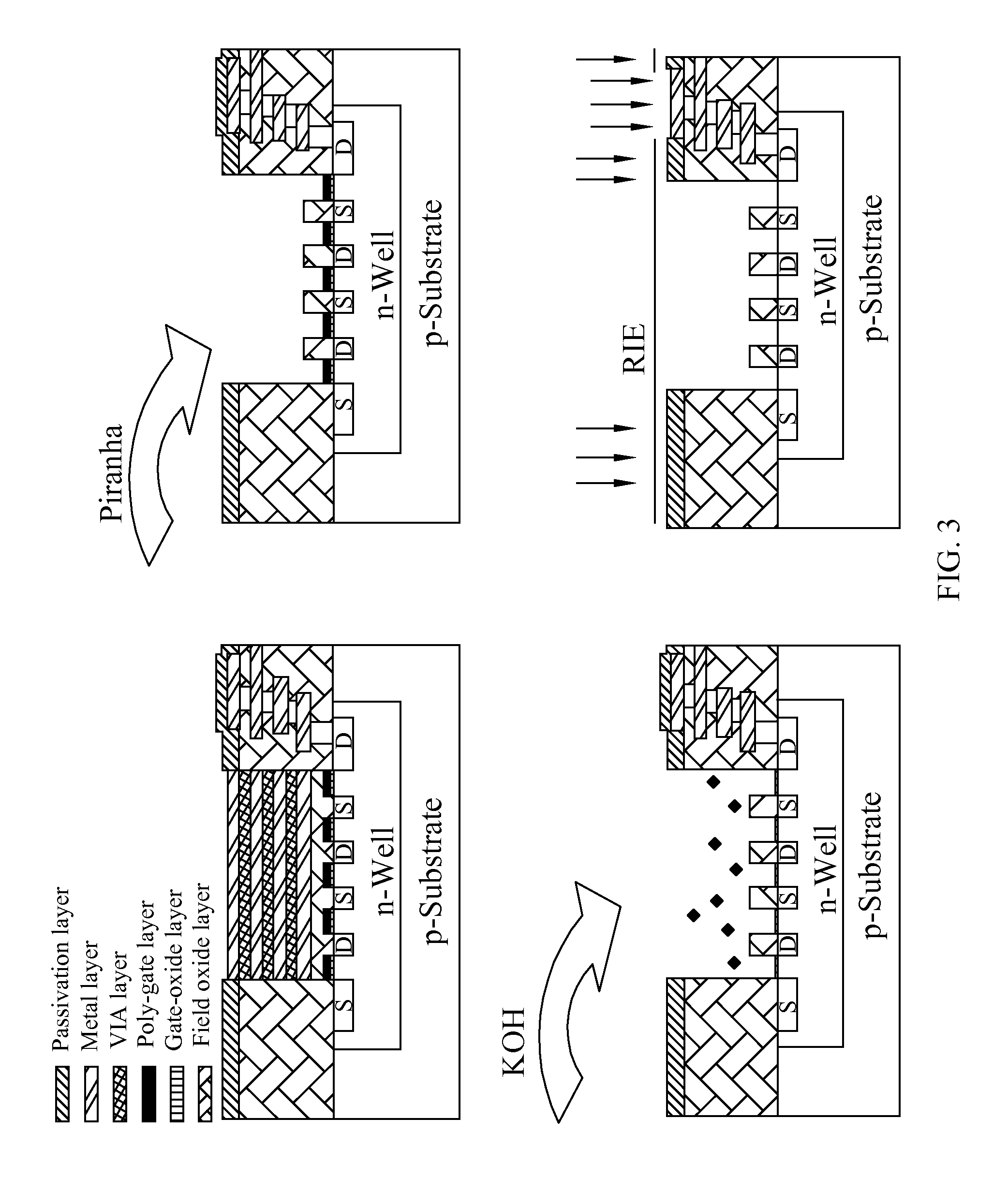Field-effect transistor type biosensor and bio-signal amplification method thereof
a field-effect transistor and biosensor technology, applied in the field of biosensors and biosignal amplification methods, can solve the problems of increasing the difficulty of designing a high-sensitivity biosensor, affecting the stability of the biosensor, and providing a limited amplification factor
- Summary
- Abstract
- Description
- Claims
- Application Information
AI Technical Summary
Benefits of technology
Problems solved by technology
Method used
Image
Examples
Embodiment Construction
[0027]The technical characteristics of the present invention will become apparent with the detailed description of the following preferred embodiments and related drawings.
[0028]With reference to FIG. 1 for a flow chart of a bio-signal amplification method for a field-effect transistor type biosensor of the present invention, the bio-signal amplification method comprises the following steps. In step S11, a field-effect transistor chip comprising a source, a drain and a gate is provided. In step S12, a biomolecular immobilization layer is formed on a gate surface of the field-effect transistor chip or a surface of an external device connected to the gate. In step S13, at least one primer is immobilized on the biomolecular immobilization layer, and in step S14, an isothermal nucleic acid amplification reaction is performed by the primer. Since the nucleic acid sequence is extended and amplified to enhance the electricity of sensing the field-effect transistor gate surface, so as to am...
PUM
| Property | Measurement | Unit |
|---|---|---|
| Temperature | aaaaa | aaaaa |
| Sensitivity | aaaaa | aaaaa |
Abstract
Description
Claims
Application Information
 Login to View More
Login to View More - R&D
- Intellectual Property
- Life Sciences
- Materials
- Tech Scout
- Unparalleled Data Quality
- Higher Quality Content
- 60% Fewer Hallucinations
Browse by: Latest US Patents, China's latest patents, Technical Efficacy Thesaurus, Application Domain, Technology Topic, Popular Technical Reports.
© 2025 PatSnap. All rights reserved.Legal|Privacy policy|Modern Slavery Act Transparency Statement|Sitemap|About US| Contact US: help@patsnap.com



